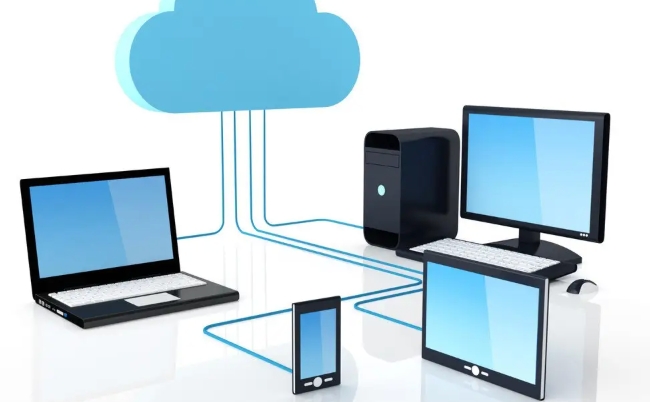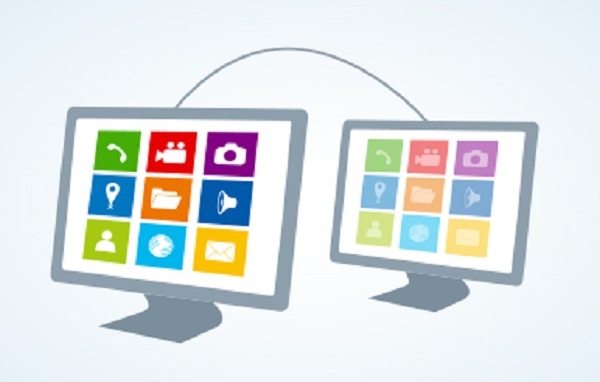Yes, you can connect to a Windows machine from Linux using RDP by following these steps: 1. Install an RDP client like Remmina or xfreerdp; 2. Enable Remote Desktop on the Windows machine through System Properties > Remote settings; 3. Configure firewall and network settings to allow RDP traffic; 4. Create a connection profile in Remmina or use terminal commands with xfreerdp; 5. Troubleshoot common issues like IP mismatches, authentication errors, or firewall blocks if needed.

Yes, you can connect to a Windows machine from Linux using RDP—it’s actually pretty straightforward if the basics are set up right. The key is to use an RDP client on your Linux system and make sure the Windows machine is ready to accept remote connections.

Install an RDP Client
Most Linux distros don’t come with an RDP client pre-installed. The most common one used is Remmina, which is user-friendly and supports multiple protocols including RDP.

To install Remmina on Debian/Ubuntu-based systems:
sudo apt update && sudo apt install remmina
For Fedora or other RPM-based systems:

sudo dnf install remmina
Once installed, open Remmina and create a new connection profile. Choose RDP as the protocol, enter the Windows machine's IP address, username, and password (if needed), then save it for future use.
Other options include rdesktop or xfreerdp, which are more command-line oriented but offer flexibility if you're comfortable with terminal usage.
Enable Remote Desktop on Windows
Before connecting, the Windows machine must be configured to allow incoming RDP connections.
- Open System Properties (you can search for it in the Start menu).
- Go to the Remote tab.
- Under "Remote Desktop", select Allow remote connections to this computer.
- Optionally, check the box to allow connections from computers running any version of Remote Desktop (less secure but useful if compatibility is an issue).
Make sure the Windows Firewall allows RDP traffic—this is usually handled automatically when you enable Remote Desktop, but it’s worth double-checking.
Also, note that some Windows editions like Home do not support incoming RDP connections out of the box. In those cases, you may need third-party tools like Chrome Remote Desktop or alternatives like TeamViewer.
Connect Using the Terminal (Optional)
If you prefer working in the terminal, you can use xfreerdp for a quick connection. A basic command looks like this:
xfreerdp /v:<windows_ip> /u:<username> /p:<password>
Replace <windows_ip></windows_ip>, <username></username>, and <password></password> with the actual values. If you don't want to type the password every time, omit /p:<password></password> and it will prompt you securely.
This method is handy for scripting or advanced users who want more control over the connection settings.
You can also pass extra flags like resolution size (/size:w:h), clipboard sharing ( clipboard), or drive redirection (/drive:sharename,/path/to/folder) to enhance your experience.
Troubleshooting Common Issues
Sometimes things don’t work right away. Here are a few common problems and how to fix them:
- Can’t reach the Windows machine? Double-check the IP address and make sure both machines are on the same network unless you’ve set up port forwarding or a VPN.
- Connection refused? Make sure Remote Desktop is enabled on Windows and that no firewall rules are blocking port 3389.
- Authentication errors? Try changing the security option in Remmina to “RDP” instead of “NLA” (Network Level Authentication), especially if the Windows machine isn’t part of a domain.
- Blank screen after login? This sometimes happens if the Windows session is locked or not properly initialized. Restarting the Windows machine often helps.
That should cover the essentials. Once everything is set up, connecting via RDP from Linux becomes just a click or quick command away. It’s not complicated, but getting all the pieces aligned correctly matters.
The above is the detailed content of How to connect to Windows from Linux using RDP?. For more information, please follow other related articles on the PHP Chinese website!

Hot AI Tools

Undress AI Tool
Undress images for free

Undresser.AI Undress
AI-powered app for creating realistic nude photos

AI Clothes Remover
Online AI tool for removing clothes from photos.

Clothoff.io
AI clothes remover

Video Face Swap
Swap faces in any video effortlessly with our completely free AI face swap tool!

Hot Article

Hot Tools

Notepad++7.3.1
Easy-to-use and free code editor

SublimeText3 Chinese version
Chinese version, very easy to use

Zend Studio 13.0.1
Powerful PHP integrated development environment

Dreamweaver CS6
Visual web development tools

SublimeText3 Mac version
God-level code editing software (SublimeText3)
 How to create a custom brush in Photoshop
Jul 08, 2025 am 01:01 AM
How to create a custom brush in Photoshop
Jul 08, 2025 am 01:01 AM
The steps to create a custom brush in Photoshop are as follows: 1. Select a pattern with clear edges and suitable for brushes, such as hand-painted textures or photo parts, and adjust it to the appropriate size; 2. Use the "Magic Wand Tool" or "Quick Selection Tool" to remove the background to ensure that the pattern is in an independent selection; 3. Create a basic brush through "Edit > Define Brush Presets"; 4. Adjust the parameters such as "Shape Dynamic", "Scatter", "Text" and "Transfer" in the "Brush" panel to make the strokes more natural; 5. Finally, click "Save As Brush" to save as a .abr file for convenience of subsequent use and sharing.
 How to recover a corrupted AutoCAD file?
Jul 09, 2025 am 01:16 AM
How to recover a corrupted AutoCAD file?
Jul 09, 2025 am 01:16 AM
When AutoCAD file is corrupted, you can take the following steps to try to restore: 1. Check the automatic backup of the file, check whether there is a .bak or .sv$ file in the folder where the original .dwg file is located, and rename the .bak file to .dwg to open it; 2. Use the RECOVER command to try to repair the file, and if it fails, use the -OPEN command to open the file for partial recovery; 3. Use third-party tools such as DataNumenDWGRepair, RecoveryToolboxforDWG, etc. to deal with seriously damaged files. To prevent future damage, you should save regularly and use "Save As" to refresh the file structure, keep the software updated, avoid saving through network drives, enable automatic save and set up
 How to fix remote desktop connection issues
Jul 08, 2025 am 01:03 AM
How to fix remote desktop connection issues
Jul 08, 2025 am 01:03 AM
Remote Desktop connection problems can be checked through the following steps: 1. Check the network and firewall settings to ensure that the TCP3389 port is open; 2. Confirm that the remote desktop function is enabled and supported by non-home version systems; 3. Verify user permissions and belong to the "RemoteDesktopUsers" group or administrator; 4. Handle black screen or lag, adjust the display options or restart the remote computer. Check them one by one in order, and most problems can be solved.
 How to get Photoshop for free
Jul 12, 2025 am 12:34 AM
How to get Photoshop for free
Jul 12, 2025 am 12:34 AM
Adobe Photoshop does not have a permanent free version, but can be legally used in the following ways: 1. The official website provides a 7-day free trial, complete functions but automatic renewal is required; 2. Use a simplified version based on the browser (Beta), which supports basic editing functions; 3. Students or teachers can obtain a full-featured version through the school education plan; 4. Consider alternative software such as GIMP, Photopea, Krita or Canva Pixlr to meet daily needs. The above methods can meet the needs of different users and ensure legal and compliant use.
 AutoCAD 3D modeling tutorial
Jul 10, 2025 pm 12:20 PM
AutoCAD 3D modeling tutorial
Jul 10, 2025 pm 12:20 PM
Friends who are just beginning to get involved in AutoCAD3D modeling can start with the following steps: 1. Start practicing from basic geometry (such as cubes, cylinders, spheres), use BOX, CYLINDER, SPHERE and other commands to build simple models and combine them into complex structures; 2. Master Boolean operations (UNION merge, SUBTRACT cutting, INTERSECT intersection) to create solid models with holes or combined structures; 3. Pay attention to the settings of the view and coordinate system (UCS), switch the view angle to understand the structure, and ensure the correct operation direction by adjusting UCS; 4. After completing the modeling, it can be exported to STL, STEP or IGES format for easy printing or sharing, and use SECTIONPLANE
 How to warp an image in Photoshop
Jul 10, 2025 am 11:49 AM
How to warp an image in Photoshop
Jul 10, 2025 am 11:49 AM
The key to distorting pictures in Photoshop is to master three common methods. First, use the "Warp" function to freely adjust the image shape. Press Ctrl T to call out the transformation box and select "Deformation", and bending and stretching by dragging the points on the image; Second, use the "Liquefaction" function to perform local deformation, select the layer and enter the "Liquefaction" window, and use the "Forward Deformation Tool" to brush the target area, which is suitable for face slimming or adjusting details; Third, use "Twisting" or "Performance Deformation" to make the picture fit the spatial angle, and select the corresponding mode after calling out the transformation box and drag the corner matching screen. These methods are suitable for different scenarios and need to be flexibly applied according to actual needs.
 How to rotate canvas in Photoshop
Jul 12, 2025 am 12:41 AM
How to rotate canvas in Photoshop
Jul 12, 2025 am 12:41 AM
Rotating the canvas in Photoshop does not affect the image content, it can be achieved through the Navigator panel or shortcut keys. 1. Use the Navigator panel: After opening the panel, drag the mouse on the edge of the preview box to rotate the canvas in real time. 2. Use shortcut keys: Press the R key to activate the rotation view tool, drag the mouse to rotate; Shift R can temporarily switch back to the original tool. 3. Reset the angle: Click the "X" icon in the upper right corner or double-click the left mouse button to restore the default direction. Pay attention to distinguishing the "rotating image" function to avoid misoperation.







